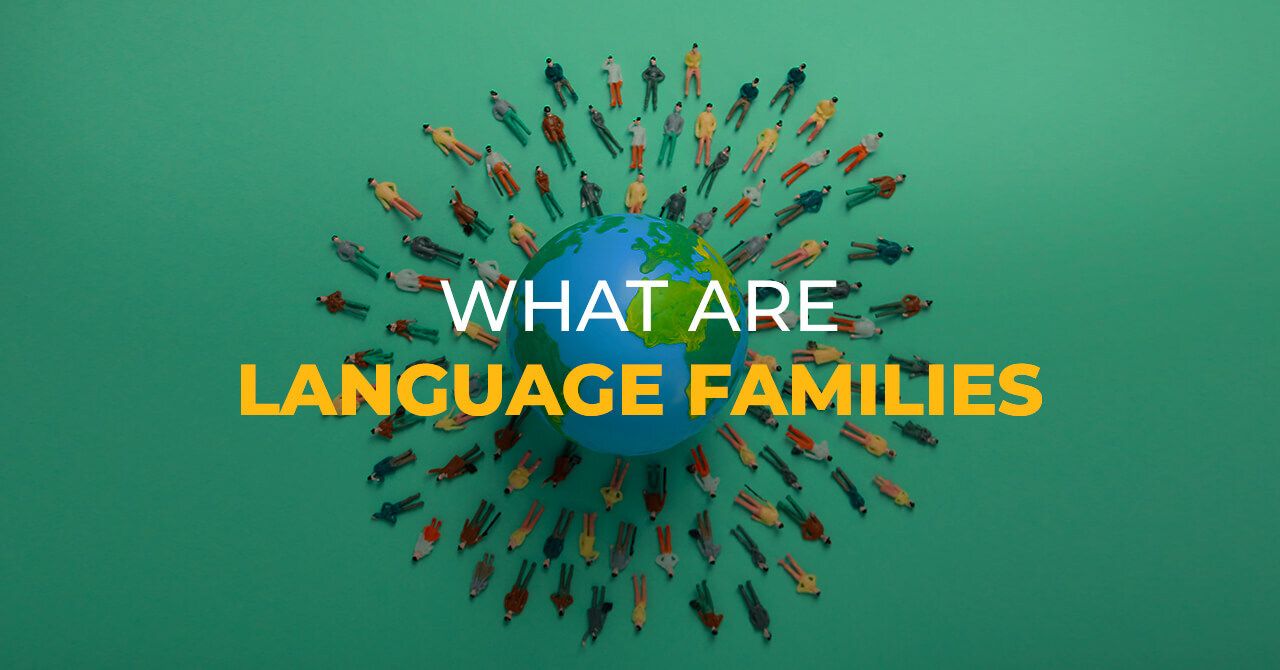
Language Branches & Distribution of Languages Spoken in the World
Every single language spoken falls under the collective grouping of a language branch. And distributed over these 142 language branches are over 7000 living languages (living because they are the first language of at least one person.)

Get a FREE guide!
Want to sound like a native English speaker?
Get our free PDF with top tips that work.

Check your email!
Every single language spoken falls under the collective grouping of a language branch. And distributed over these 142 language branches are over 7000 living languages (living because they are the first language of at least one person.)
What is a language family?
If you are new to linguistics, the term “language family” may be foreign, but that’s okay.
Interestingly, not all languages belong to a family. Some languages have been recognized as stand-alone, unable to fit into the collective language families. Such languages are known as language “isolates.”
Language Families of the World
Six of the 142 language families in the world are more prominent than the rest owing to the number of languages they embody and the number of people that speak them either as native or even second languages.
The Indo-European Language Family
This language consists of the languages spoken in Europe, some parts of the Middle East, a majority of South Asia, and some in North and South America.
The mother language of Indo-European, spoken around 6000 years ago, emerged from the far eastern part of Europe and spread across Europe and into Asia. However, due to colonization, this language family did not remain in these places. The Indo-European family has now spread all over the globe.
This proto-Indo-European language has evolved into five major subfamilies: Germanic, Italic, Indo-Iranian, and Celtic. This family has birthed the languages with the most speakers worldwide, with the English language belonging to one of its subfamilies.
The Sino-Tibetan Language Family
Thought to have originated from somewhere in the Himalayan Plateau, and second to the Indo-European language family is the Sino-Tibetan language family.
Sino refers to the Chinese branch with the largest number of languages in the world1.3 billion speakers, and Tibetan-Burman refers to the languages spoken in the Malay Peninsula, northern Pakistan, and northeastern Vietnam. This language family contains about 403 differentiated languages within these two branches.
The Niger-Congo Language Family
The Niger-Congo Language Family is the largest language family in Africa and third worldwide, containing over 1500 languages and is commonly spoken in sub-Saharan Africa.
Experts have dated the earliest evidence of the Niger-Congo languages to the 16th century. However, the classification of these languages in this family became a problem since the people that lived in the regions where this language was spoken lived in extremely diverse groups that have continued to split throughout their history.
The Niger-Congo Language Family is split into several language branches:
- Benue-Congo;
- Atlantic;
- Mande;
- Gur;
- Kwa;
- Adamawa-Ubangi;
- Creoles.
The Austronesian Language Family
They were first discovered in the 17th century when research compared Polynesian words with those of the Malay language. However, the origin and history of this language remain unknown.
This language family has two subfamily branches—Malayo-Polynesian and Formosan—with 1268 active languages. The languages and dialects are spoken in Madagascar, Taiwan, Hawaii, and New Zealand all belong to this language family, with its footprints almost halfway across the world.
The Afro-Asiatic Language Family
This is the language family of languages spoken in Western Asia, North Africa, some parts of the Sahara, and the Horn of Africa. Formerly known as the Hamito-Semitic or the Erythraean languages, this family includes Arabic, Hebrew, Amharic, and Hausa.
History has it that the speakers of these languages were some of the first people to develop writing systems. Evidence of this was found in documents dating as early as 5000 years ago.
However, as seemingly large and wide-stretched as this language family is, much research hasn’t been done on it. Hence, like most other language families, its history is a bit sketchy.
The Dravidian Language Family
The history of this language family is quite a mystery. Linguists for years have pondered where these languages come from, pouring over scripts and old texts to find a meaningful connection, yet have had no answer. Linguists know how important the Dravidian languages are to southern Asia.
This language family contains about 80 languages, with Tamil, Telugu, Kannada, and Malayalam being the most commonly spoken. Regardless of being the smallest of the six major language families in the world, the Dravidian languages are the native tongue of 215 million people living in Southern India, Pakistan, and Sri Lanka.
Conclusion
Although the original speakers of the proto-languages of the various language families may not be known, the languages they birthed have evolved over the centuries, and so too has our understanding of them and the little we know of their history. Linguists and researchers have not stopped trying to learn more about the historical connections between these languages and how they came to be. History is important when learning a new language. Where it is from and how it has evolved will help you appreciate it even more. Learn a few new things today!
















